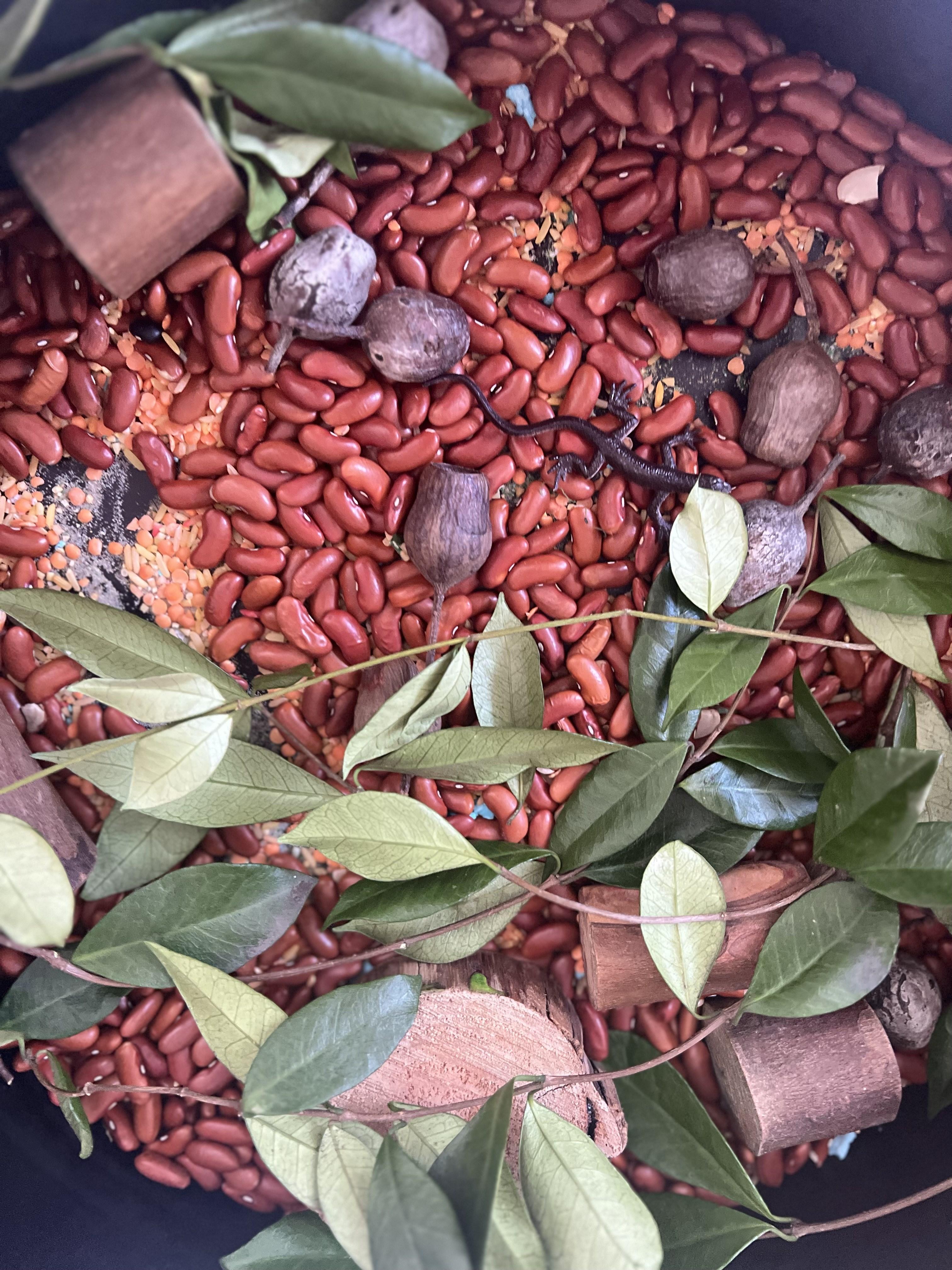Principal’s Message Continued...
By Christine Irwin
Our educators here at Reddam are all qualified and have a thorough knowledge of early childhood development as well as their own experiences of understanding of how children grow and develop. The educators understand the importance of and the process of linking observations to well know theorists to support their observations and choices for environments and experiences they provide.
Some theorists that you may see in our observations include:
Jean Piaget- Constructivist theory – Development occurs through interactions with the environment. Piaget’s theory focuses on Cognitive development.
Lev Vygotsky- Sociocultural theory – development is based on relationships and interactions with others. Vygotsky focuses on Cognitive and Language theory.
Howard Gardner - Theory of multiple intelligences - Focuses on Cognitive development and that children have intelligences beyond reading writing and arithmetic .
Urie Bronfenbrenner – Ecological theory – Bronfenbrenner focuses on customs, culture values and laws and looks at the whole child and how their development is affected by social systems.
Erik Erikson – Psychosocial theory – Looks at development in the area of Social and emotional development . He believes that development is determine by a series of crises and conflict and development proceeds though stages.
Mildred Parten – Play theory – Parten developed five categories of social participation that are used to describe children’s play.
The above theorists are just a handful that the educators will link their analysis too. Please feel free to discuss any areas with the Core teacher or Educators in regard to your child’s development.
We hope as families you are enjoying reading the observations of your children on tapestry and how we as educators attempt to link this to current theory’s and development so we are able to scaffold their learning and give them the best environment to grow and develop.
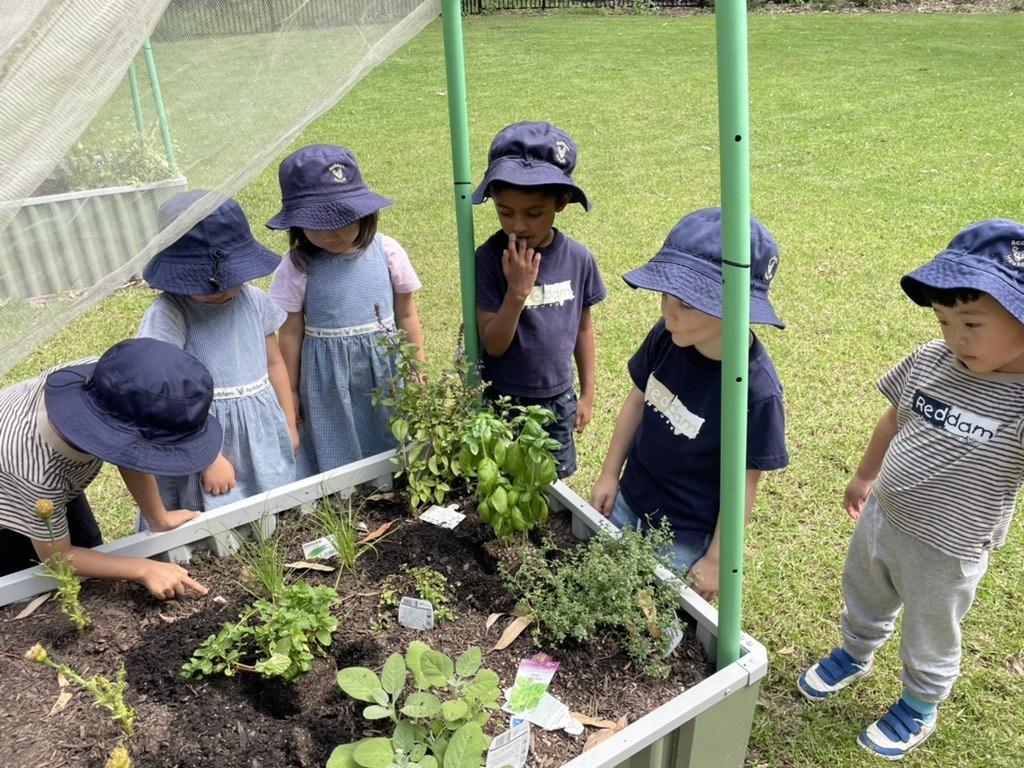
Looking forward to chatting to you soon,
Christine Irwin
Principal Reddam ELS, Lindfield
2
Stage 1R
By Heather Gaskell
Welcome families to week 6 and our little ones have still been enjoying our term transport study. We are very blessed to have a construction site opposite the school at present, the children are often treated to see various construction vehicles drive pass the school, especially when we are playing in our yard. When a vehicle passes there is a chorus of calls from the children “truck, truck’ or if the train passes its “train, train”. We talk to the children about the trains and usually wave and say “bye train”.
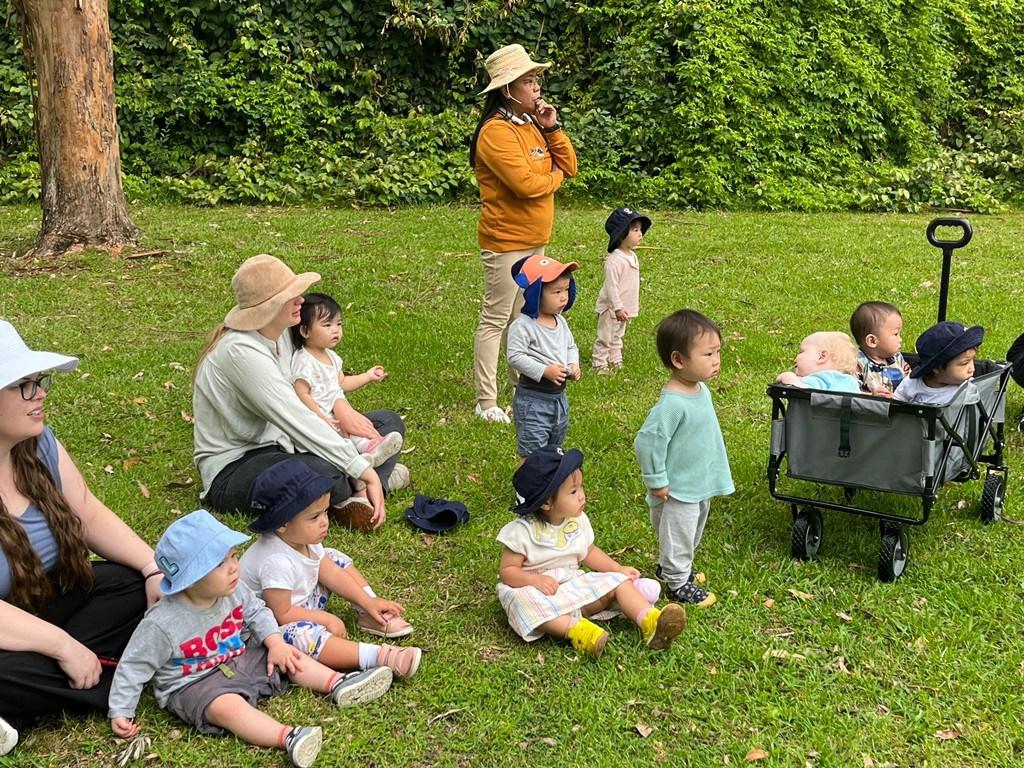
So owing to the construction site we have incorporated construction into our learning. Early in the week there was a very large crane at the construction site, therefore we decided to make an impromptu visit to the park to observe the crane. This was a very exciting adventure for the children, we joined with our sister class 1E and went on our trek. The children loved the excitement of getting ready and the non-walkers very happily sat in our little vehicle to be towed along. Once we arrived at our destination the children were enthralled at the size of the crane with many of them pointing at it. Luckily the crane was actually working and we watched as it lifted heavy loads of building materials around the site. We could observe the workers preparing the loads, tying them with chains. Then they connected them to the cranes big hook and then the children listened as the engine revved and the heavy load rose in the air and the crane swung around and placed it back in another spot.
To further our exploration of vehicles and how they move we utilised our slope in our yard by rolling hula hoops down it. This movement of the hoops rolling down the slope is like wheels on a vehicle turning to move it, or like the cogs and wheels in an engine moving and turning to propel the vehicle. Or we could imagine them to the the steering wheel of a car. How many wheels does a car have? ……….Six, four tyres, a spare and steering wheel, lol.
Yes, we did do other things in our week like made Valentines Day cards, construction truck play in the sandpit and dressed up in construction high-vis to match our vehicles to name a few more things. We also introduced the children to some tube play with small cars. The children were a little uncertain of this play at first but once it was demonstrated they were fascinated with the action. This action is perfect for their eye hand coordination, dexterity and cognitive development.
Wishing all our families a wonderful weekend Heather, Carina and Jing
3
Stage 1R:

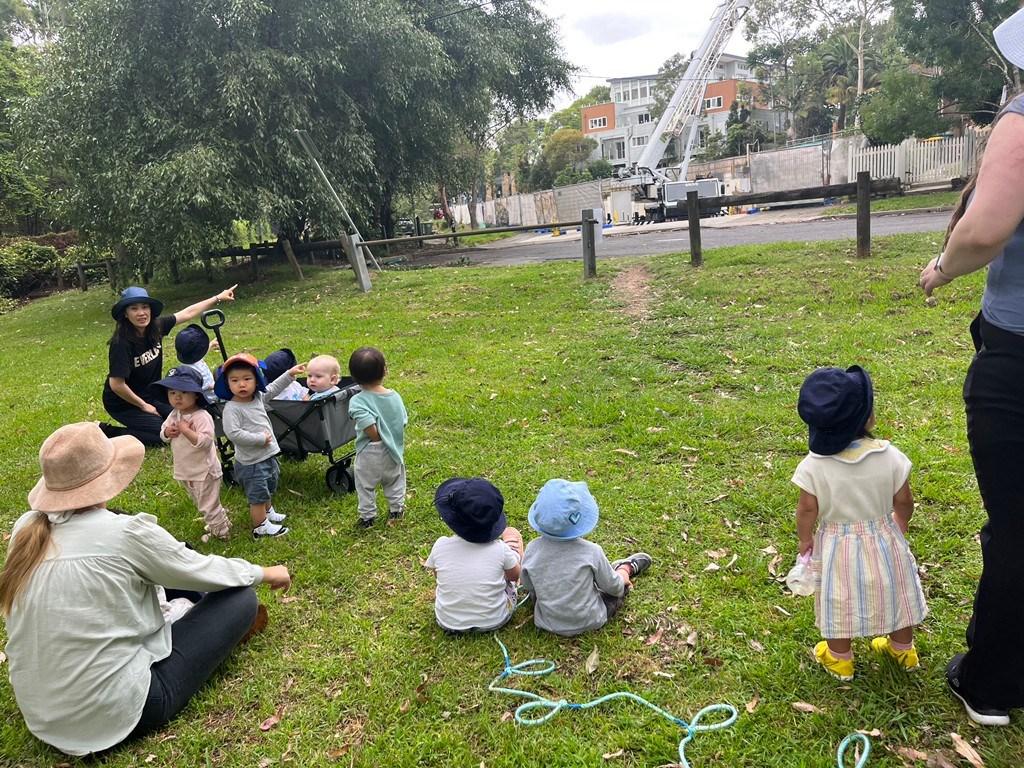

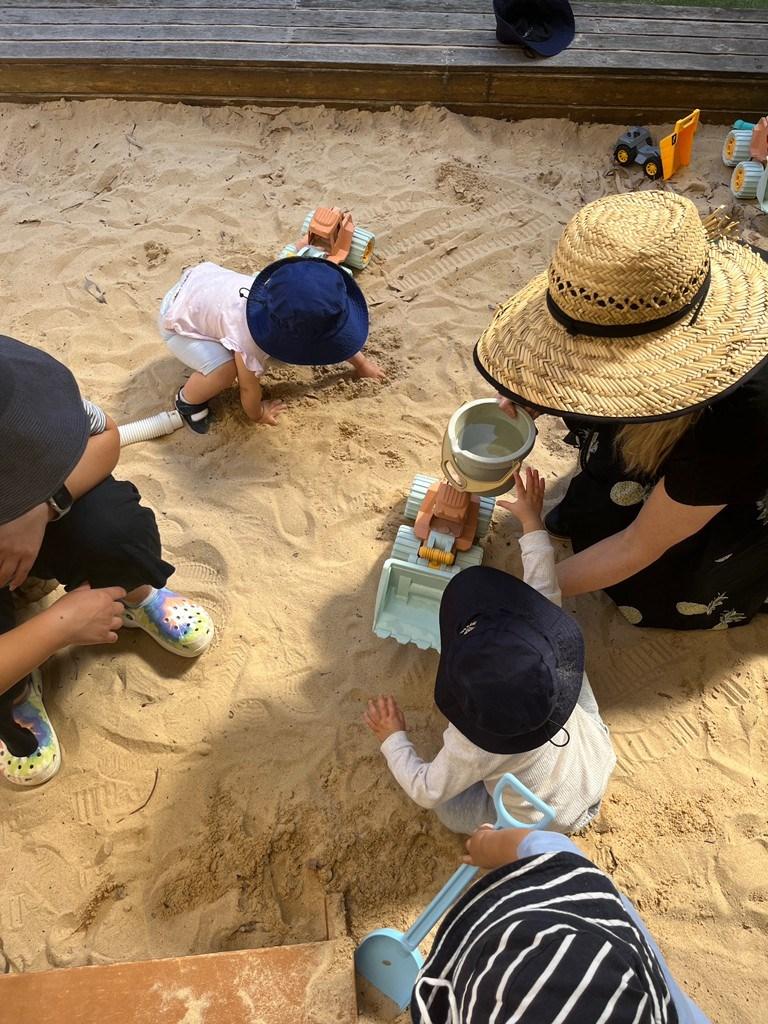
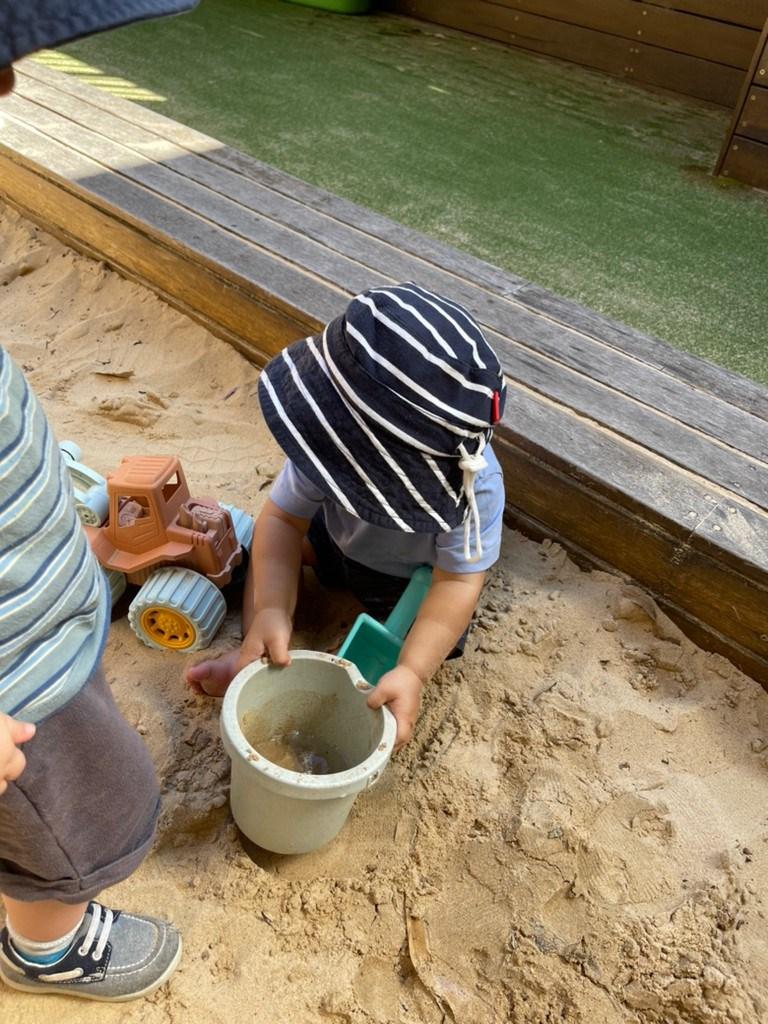
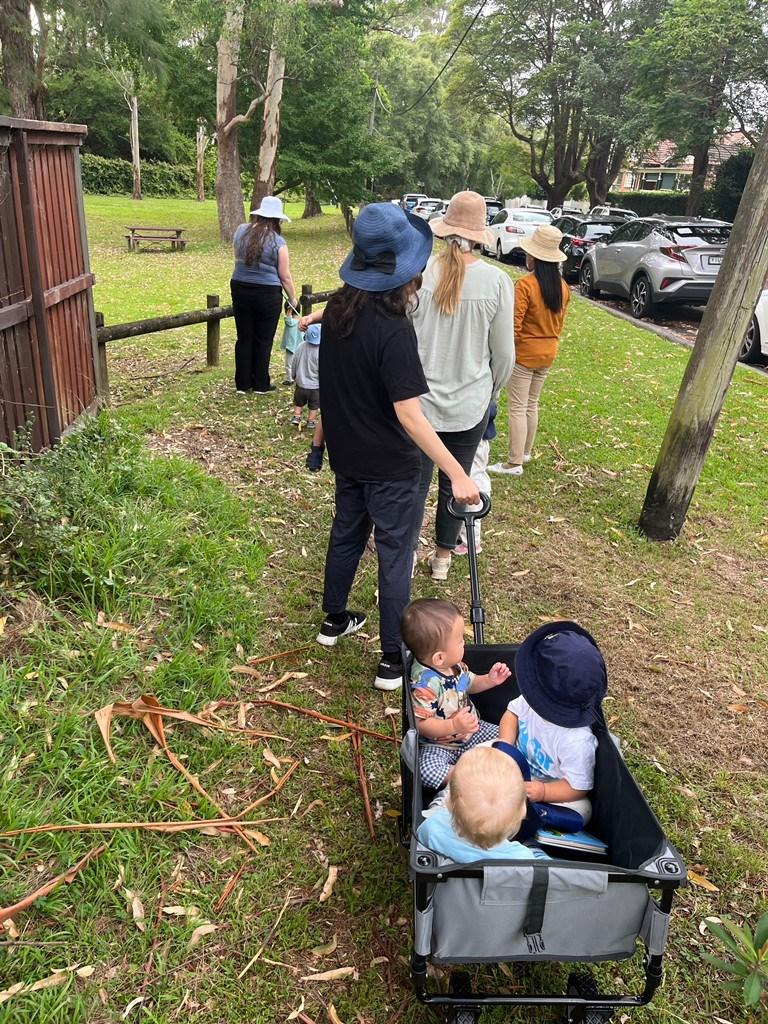

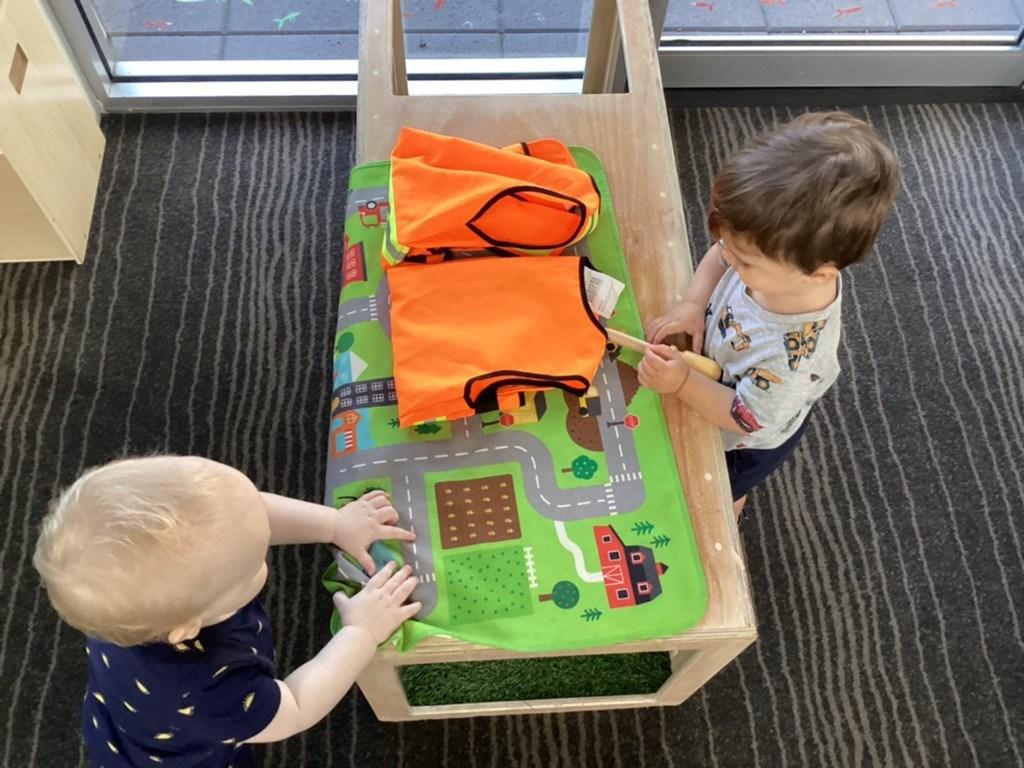
4
By Hazel Whybrow
‘Play is the highest form of research’ - Albert Einstein

This week we have been continuing to explore the children’s interest in diggers as well as other vehicles. At our provocation table a large tray has been set up with dirt and the yellow construction diggers. We have also displayed images of diggers and illustrations from some of Sally Sutton’s books for the children to explore. Throughout the week the children have loved this experience. They have been eagerly finding the different diggers and naming them, as well as using the diggers to move the dirt around. This week we have also been reading a new song book, ‘The Journey Home from Grandpa’s’ by Jemima Lumley. In this book we travel home from Grandpa's house and see all different vehicles along the way. The first vehicle we saw was a yellow car driving down a bouncy, bumpy road. Next we saw a helicopter and then a train. Then we drove past a farm and saw a pink tractor with big wheels. We then drove past a construction site and saw a green digger and a black crane working hard. We saw a boat floating on the canal, and an orange truck that was hurrying to make a delivery. Lastly we saw a fire engine rushing very quickly past. The children excitedly pointed out the different vehicles they could see! We have also been reading our current favourite, ‘'We All Go Travelling By' by Sheena Roberts. The children have enjoyed singing along and joined in the actions and noises as we saw a yellow school bus, a bright red truck, a long blue train, a fast orange car, a little green boat, a shiny pink bike and a big white plane. This week we have enjoyed singing 'The Wheels on the Bus' with the accompanying book illustrated by Mandy Foot. The children were all eager to join in the actions making the wheels go around, the windows go up and down and the wipers go swish, swish, swish. On one of the pages the driver says, "Ticket's please". The children were all eager to give their tickets to the driver, giving me a high five as they 'scanned their opal card'. At the end of the book we saw crocodiles near the bus and we had to be very quiet so that we wouldn't wake them up! We have also been singing 'Row Row Row your Boat' and looked at the book illustrated by Matt Shanks. The children enjoyed participating in the actions including snoring, squeaking, hiding, laughing and screaming. The children smiled and laughed at each page as they saw an animal doing something silly. "Crocodile!" we said as we turned the final page, and all joined in to scream. To extend on the children's interest in painting and in transport, this week at the easel the children have been choosing a colour of paint to use each day and vehicles of that colour have been displayed as provocation. As the images of the vehicles were displayed above the easel the children enthusiastically pointed them out. The children really enjoyed this painting experience and seemed really interested in the marks they were making on the paper.
Have a great weekend!
Stage 1E
6
Stage 1E:
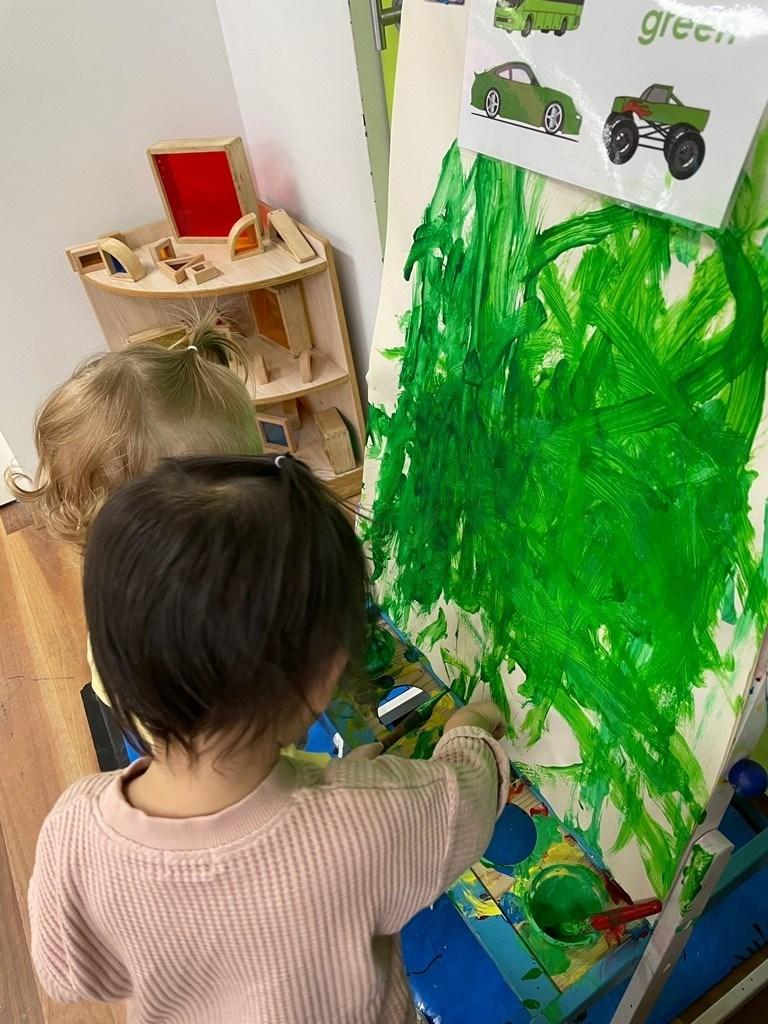
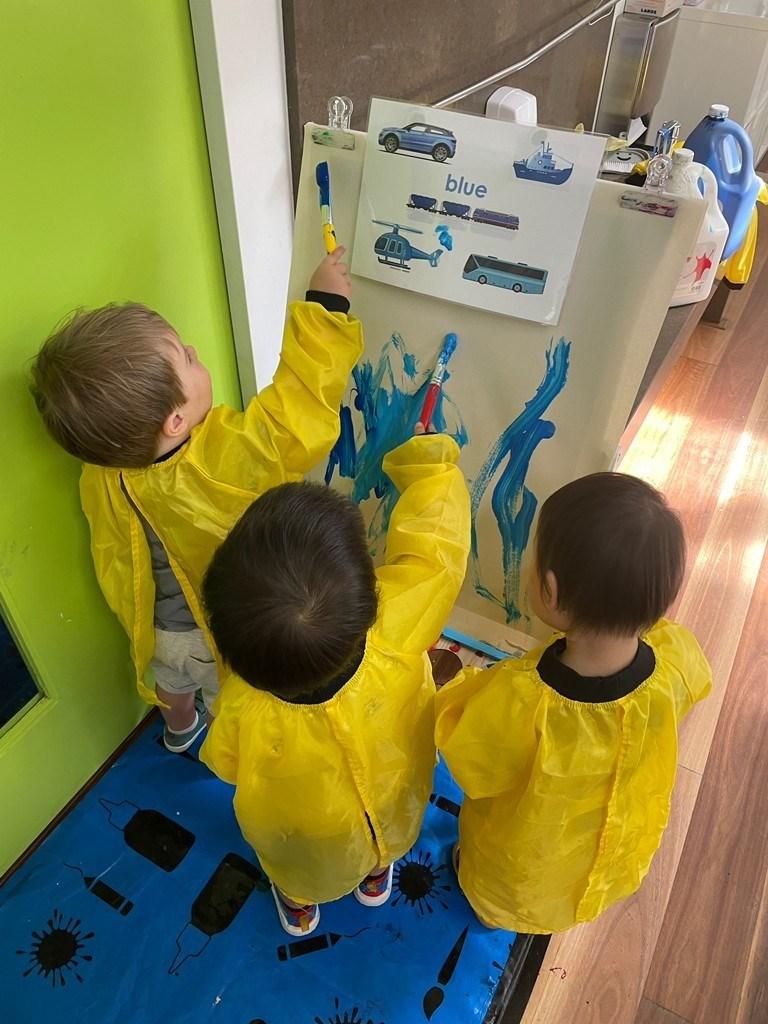

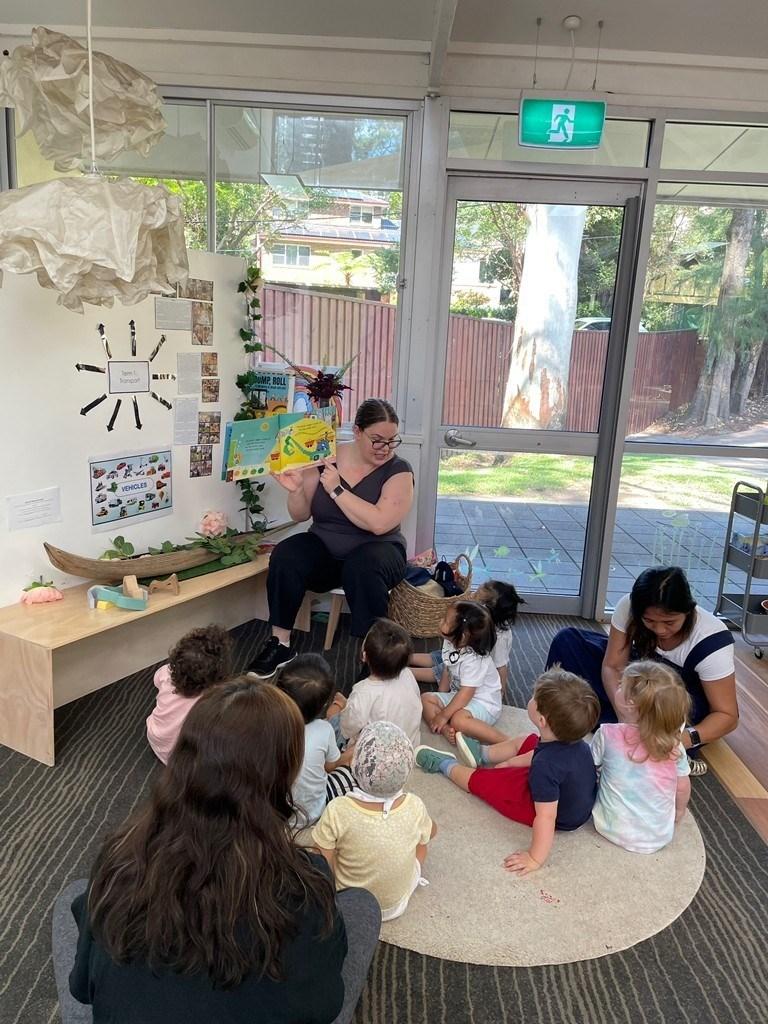
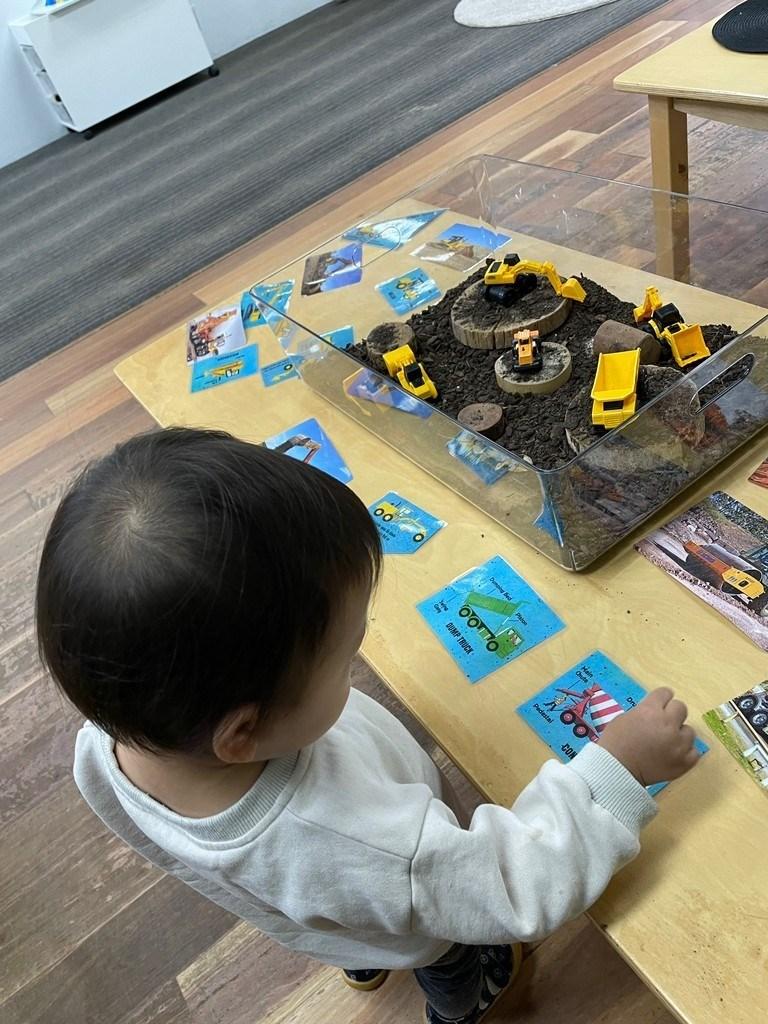
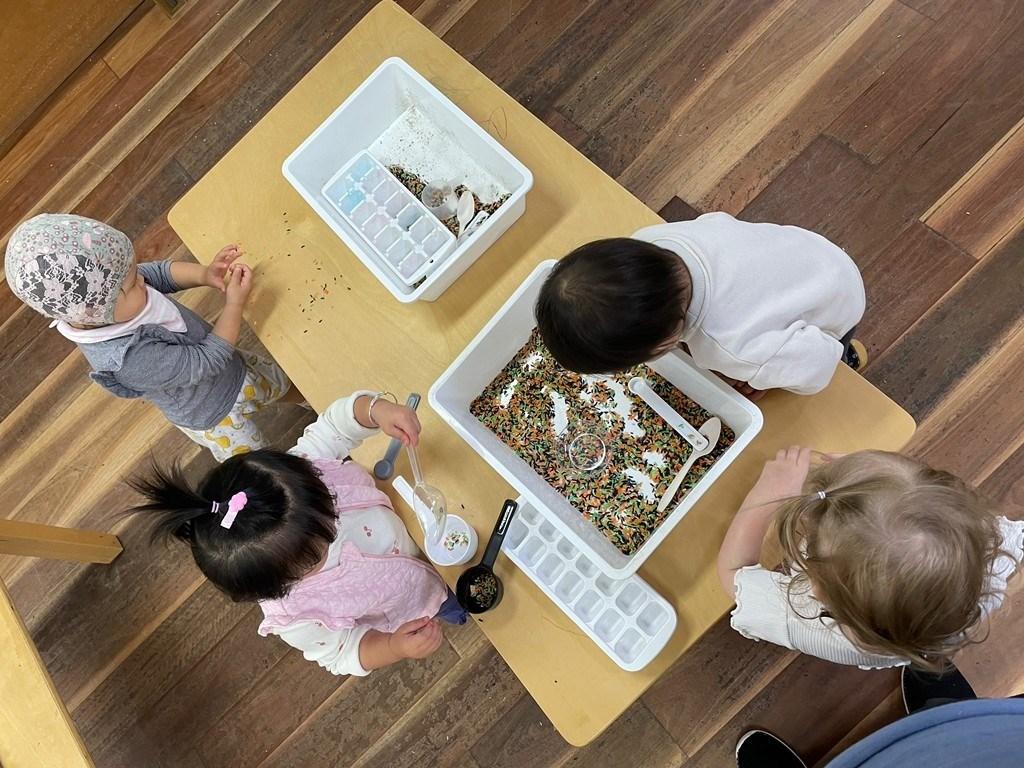

7
Stage 2R
By Vivian Truong
“Children are not casual guests in our home. They have been loaned to us temporarily for the purpose of loving them and instilling a foundation of values on which their future lives will be built.” – James Dobson
This week we started our journey learning about My Body. Identifying body parts and being intentional about using them is a cognitive, physical, and language-enriching process for children. In early childhood, we learn through sensory discovery which happens by moving through and experiencing the world. With each physical ability we acquire, we become more aware of something else we can do, see and explore. Our bodies are essentially our toolkit for discovery.
Children were especially intrigued with the skeletal system. They discovered a variety of Human Organs. They simply learned the bones are responsible for supporting our bodies, giving us our shape, and protecting our major organs. Our little learners practised to be surgeons and enjoyed injecting gelatin with different colours. This experience was all about science and art for children. They observed how fascinating it was to shoot streaks of colour through gelatin and when the colours mixed together.
One of the children's most favourite experiences during the week was Red Colour Bean Human Body Sensory Tray. In these trays we had red beans just like red blood cells in our body and human body organs. Children enjoyed discovering the cells and learning about how each organ works. Inspired by blood vessels in our body.
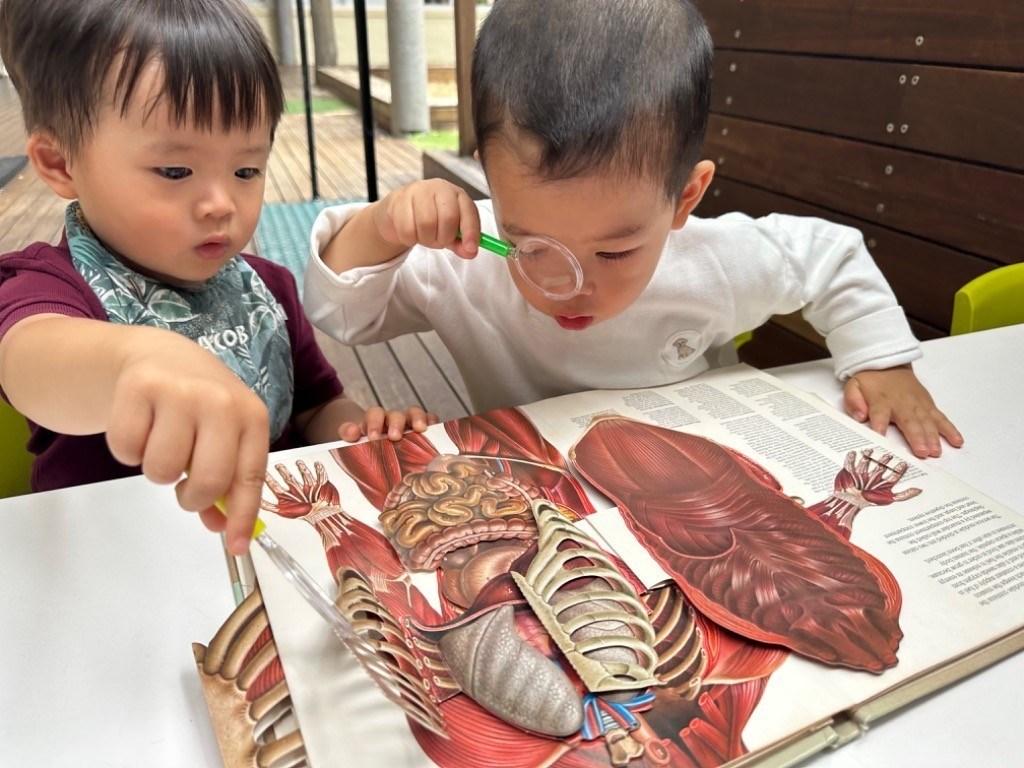
The highlight of the week was inviting children to measured their height by yarn. Following that, their yarn (same length of their height) was sticked under their individual photos on the wall to display. The children were encouraged to engage in the group discussion of “who is taller” by comparing their length of yarn. They liked to visit back their height display wall, standing against the wall and comparing their own height with their friends’ yarn. Moreover, to learn about dental care and oral health, children practised brushing plastic teeth. This sensory activity was a great introduction to the importance of dental health and great for practising teeth brushing!
As we model the different ways to meet our physical needs and learn about our bodies, children will learn that respect and kindness play a large role in caring for their bodies. Eventually, they will learn that a happy body is a happy me and be more inclined to cherish their bodies throughout life!
Wishing everyone have a wonderful weekend!
9
Miss Vivian, Miss Doris, Miss Connie and Miss Fatima
Stage 2R:

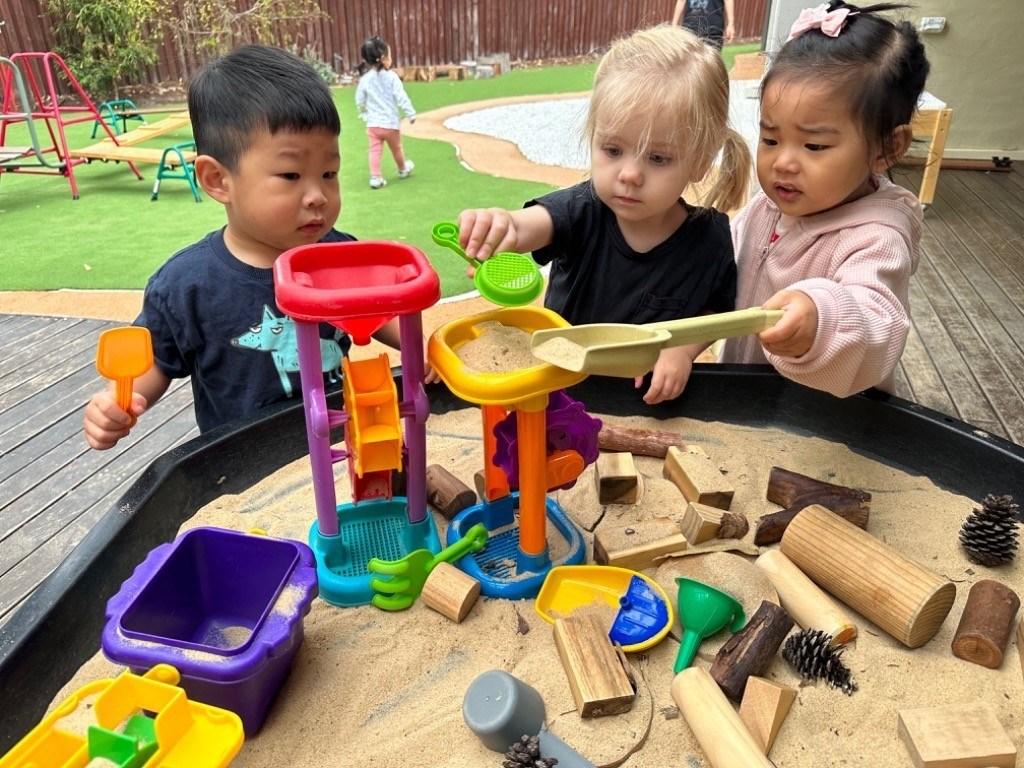
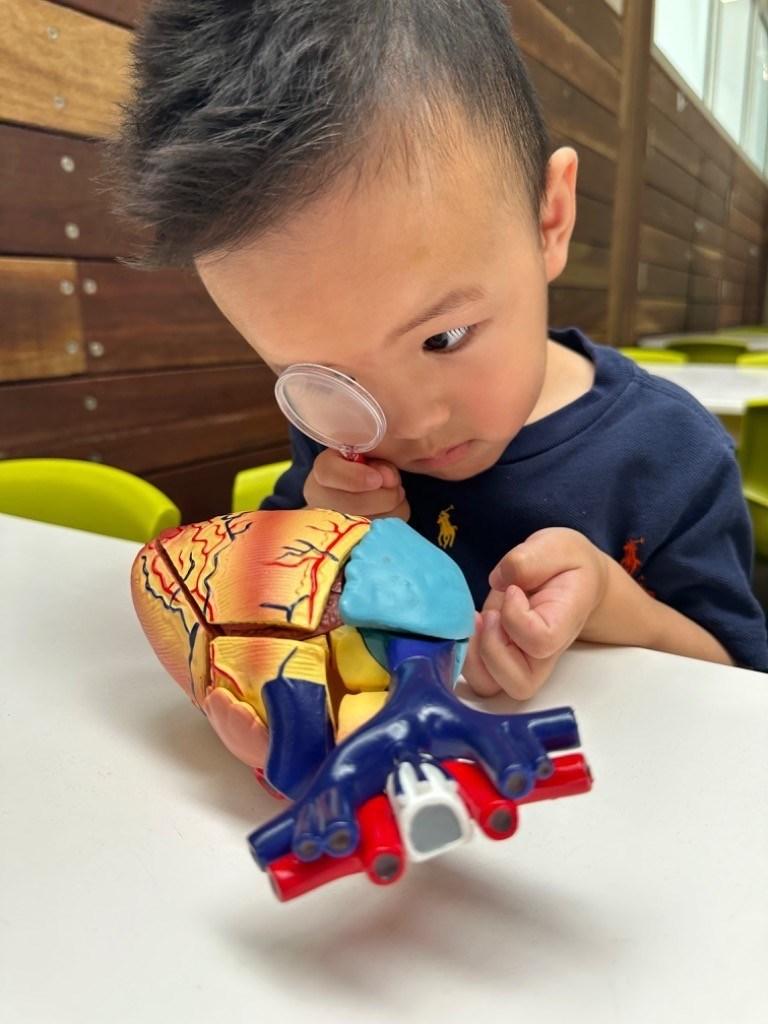



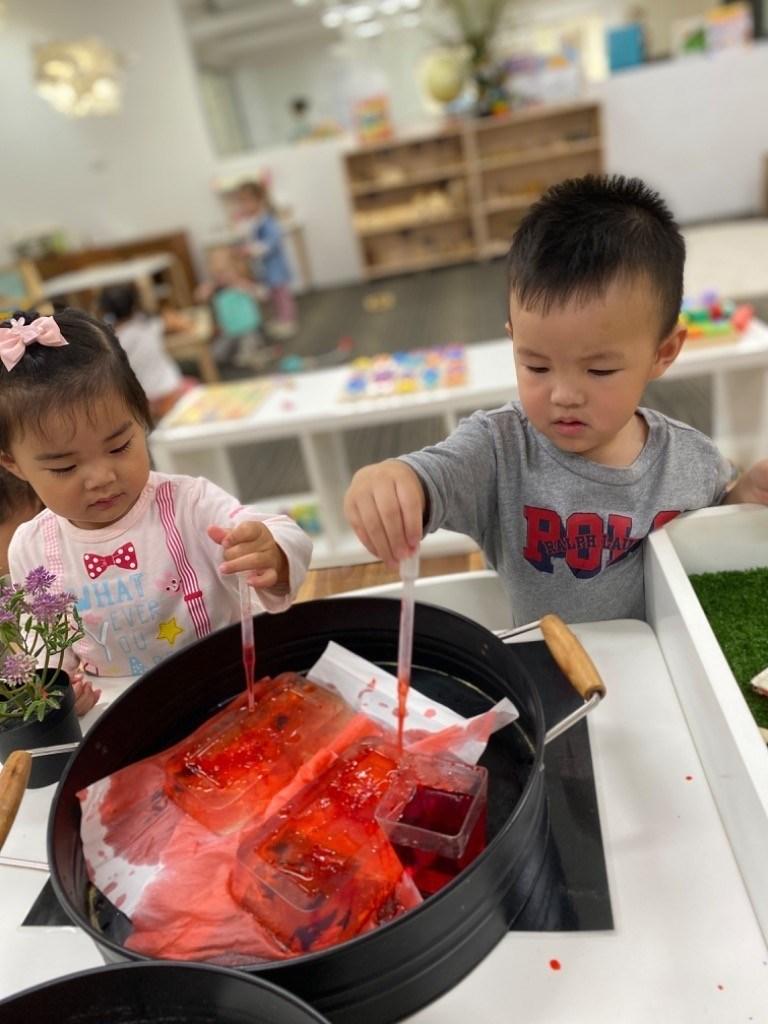


10
By Mia Doan
Having the children bring and share their books from home proves to increase their sense of belonging, agency and the love of reading. They are curious to know what books we would read today and what the stories are about. Fostering the love of reading boosts their early literacy skills such as making meanings from visual images, understanding the characters' emotions and feelings, and enhancing their language and creativity. Reading has a great power to guide and help children understand the big world. By interacting and asking simple questions during reading, we can not only sharpen their numeracy skills as well by counting objects in the books but also their social skills by interpreting the characters’ emotions and feelings.
We had a fantastic week reading beautiful various books from our friends. Especially, books from Henson, Ira and Zorina. Zorina's book, 'I am a Bunny' by Richard Scarry was about a bunny who enjoyed her play throughout four seasons. We can observe the changes of seasons via beautiful and vibrant images. Zorina's book was a great start to link to Henson's book, 'The Squirrels Who Squabbled' by Rachel Bright and Jim Field. Before reading the book, Henson shared, "My dad reads me this book every day before sleep." The story was about two greedy squirrels who learn to collect food before winter comes and share in the hilarious rhyming adventure. Ira's book belongs to one of the children’s favourite cartoons, Bluey. In this story, Bluey went to the beach and encountered many wonderful ocean creatures on her walk.
During the past couple of weeks, the children showed interest in painting. Miss Shandie invited them to create their unique art and craft using marbles and boxes. The children enjoyed dipping their marbles in the paints and used the spoon to pick up the marbles and put them onto the paper. The children started shaking and moving their boxes to create a unique art then they start singing the song " shaky, shaky, stop" They independently chose the colour of the paint they would like to explore and shared their thoughts verbally with each other. The children were very happy and felt proud of their achievements.
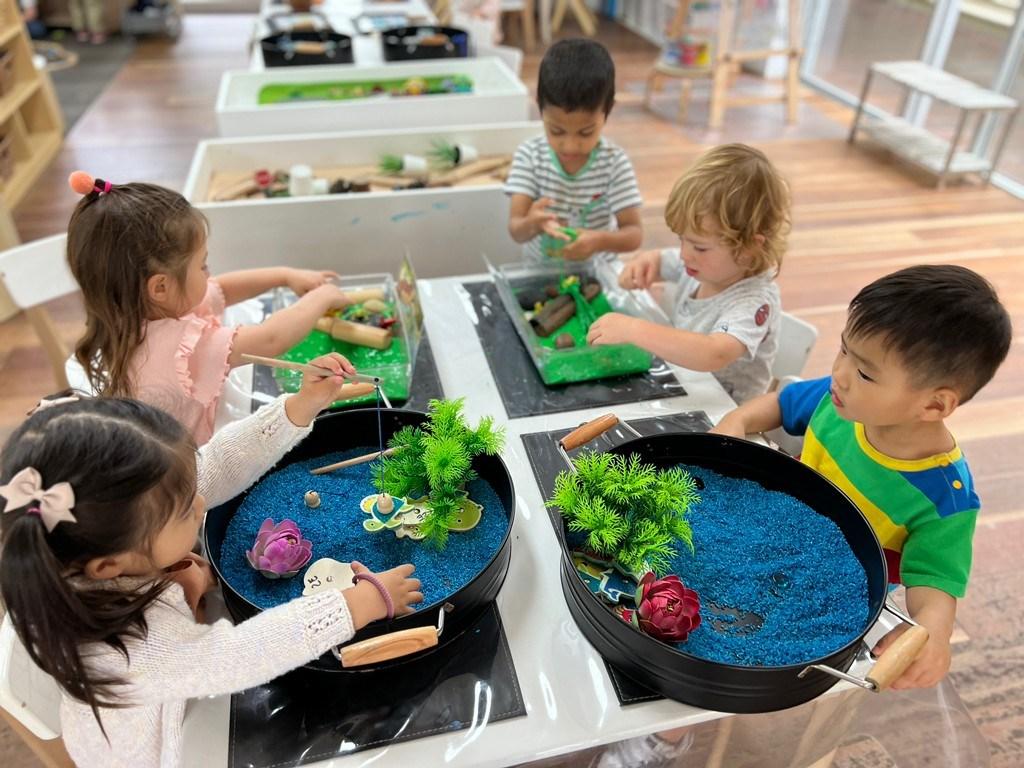
On a rainy day, Miss Chloe invited the children to stretch their bodies through the obstacle games. When the children encountered outdoor obstacle courses, they developed and enhanced strength and balance. In this small group, the children's interest in the obstacle games and their enthusiasm for the challenge was clearly observed. They beautifully took turns and waited for their friends to complete. Most of the children demonstrated concentration and patience to complete the tasks.
With the love of cooking and pretending to play in the kitchen, Miss Mia extended the children's mutual interest by inviting them to make healthy pancakes and Valentine’s jelly. The children were eager to help Miss Mia to shake the batter. Before adding milk, our friends got to hold the pancake bottle and felt how light it was. After adding milk, the bottle became a little bit heavy. The children carefully observe flour and milk were still separated. Our lovely children took turns helping Miss Mia shake the bottle to mix the ingredients. They later shared that it became so heavy and very hard to shake. We all enjoyed the delicious pancake after our hard work.
Have a wonderful weekend,
Stage 2E
12
“The more that you read, the more things you will know. The more that you learn, the more places you’ll go”
(Dr. Seuss)
Mia, Chloe, Shandie, Alisha, Charity and Yali
Stage 2E:


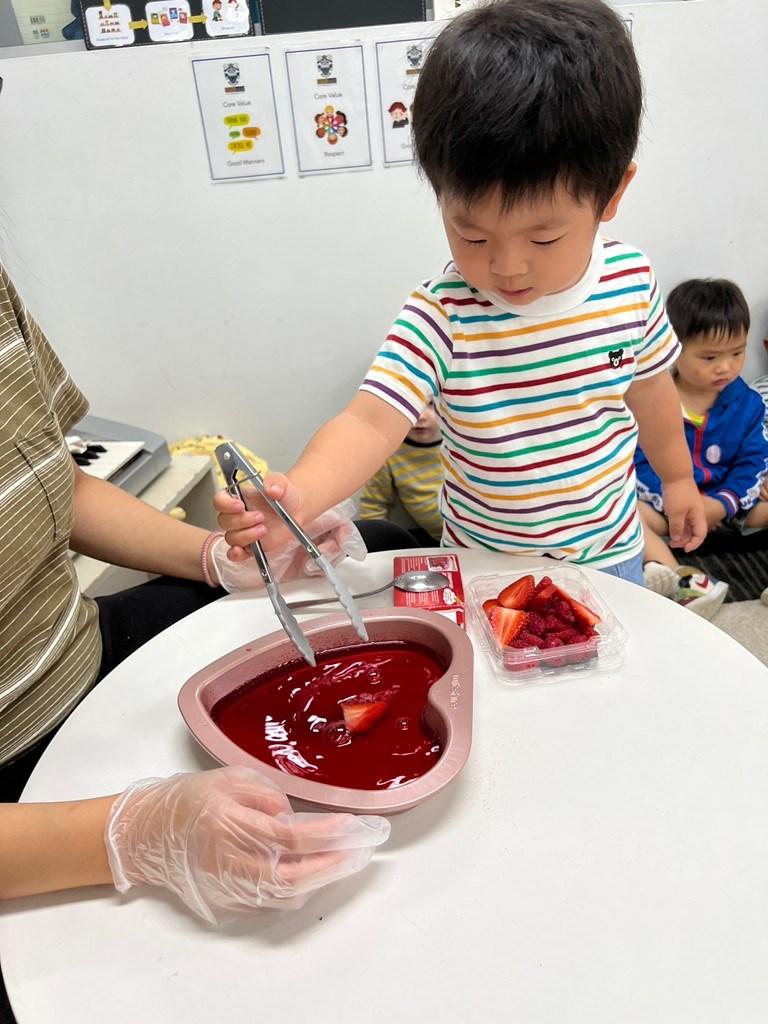
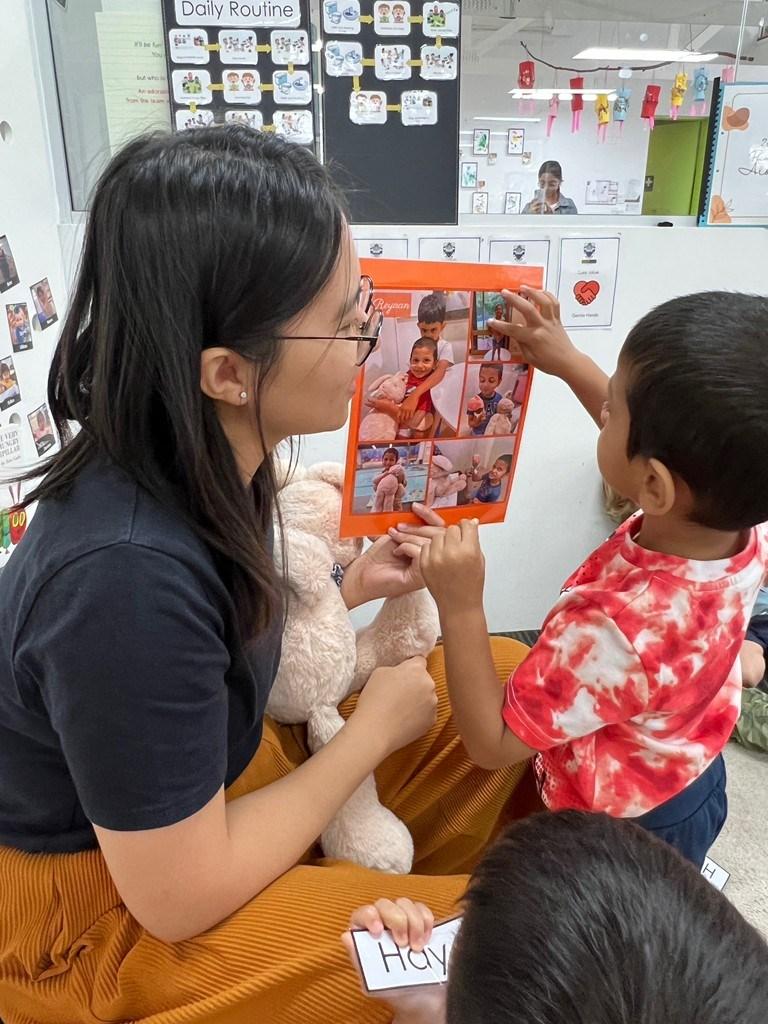


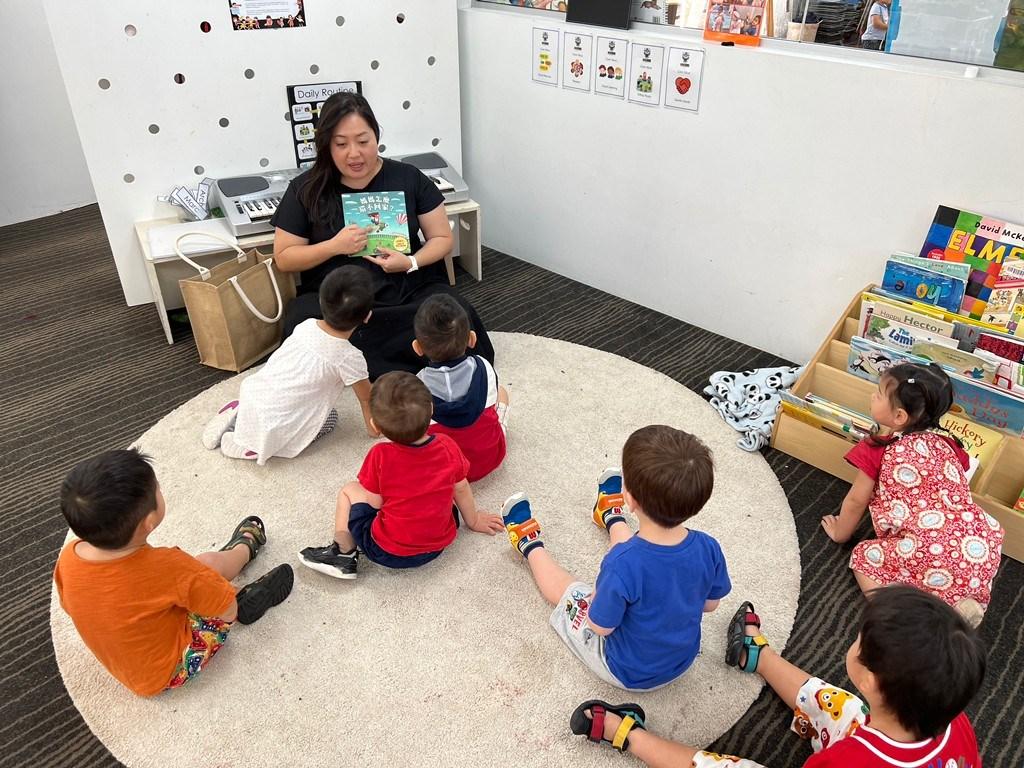
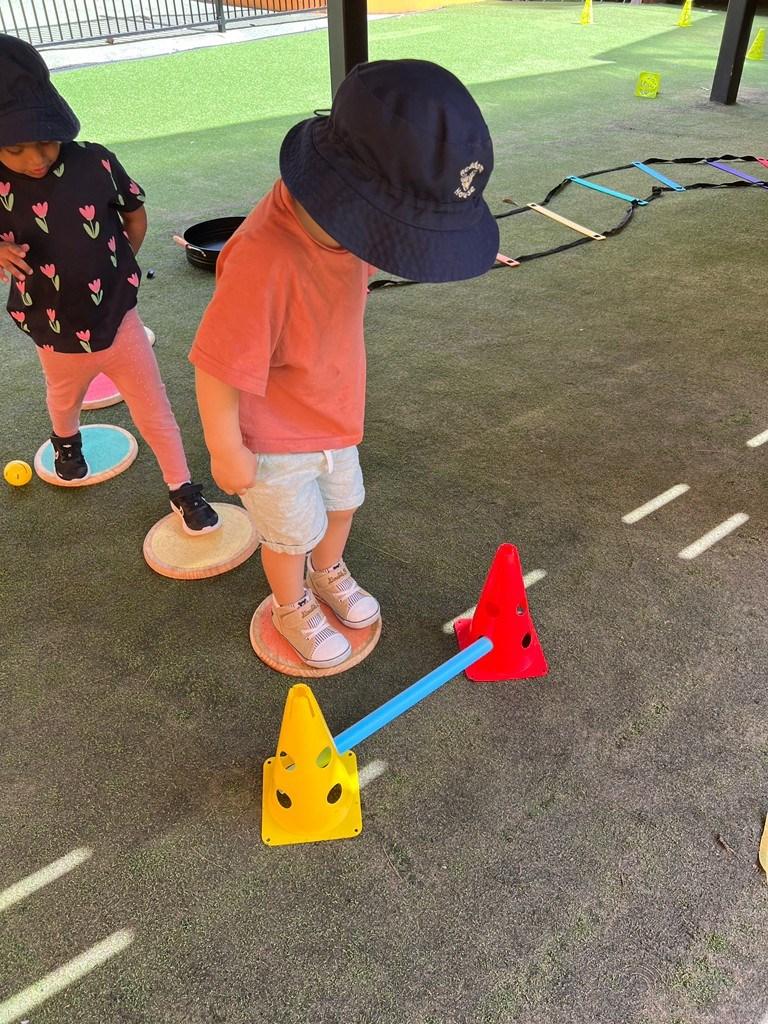
13
Stage 3R
By Grace Nolan
“The learning environment is perfect for fostering a ‘flow’ state. Working side-by-side with the teacher, students have the opportunity to consolidate skills to the point of mastery and work ‘in task’, displaying sustained interest and serious investment in their work” (Davis & Parsons, 2019)
As we dive deeper into the children’s interests we found that they have become curious about gardening and the process of creating a garden. As a result, we have started our Garden Project where the children have been invited to design and intentionally think about what we will plant in our garden bed. Firstly the children were asked what they see in the garden and what we need for plants to grow. Writing down their answers we saw that the children were able to recognise that water, sun and soil were a must. We then drew the garden bed and drew what would be needed as a visual representation. The children then picked out the dead leaves from the garden bed as preparation for the next step in the project. By encouraging the children to be involved at the start of the project and design, they are able to co-construct knowledge together with their peers and educators (Piaget). The children are also given the opportunity to take responsibility for their project and given a sense of agency and independence. Listening to the children’s ideas also demonstrates the value we hold on children’s opinions and contributions to their world.

The children’s interest in dinosaurs has steadily continued and as a result we planned to extend their vocabulary and knowledge surrounding dinosaurs. In our morning meetings we introduced the concept of ‘Bipedal’ and ‘Quadrupedal’ dinosaurs. This experience aimed to invite children to recognise similarities and differences, learn new vocabulary and count using one-to-one correspondence. The children were quick to categorise the different dinosaurs into either ‘Bipedal’ and ‘Quadrupedal’. During this experience the educators scaffolded the learning with use of visual representations, concrete manipulation, modelling and guidance. As a result, when the experience was repeated later in the week, the children were able to sort the dinosaurs confidently. Repeated experiences allow children to consolidate their understanding and master new concepts and skills (Piaget).
Next week we continue to explore other attributes of dinosaurs and further engage in the gardening project.
Have a lovely week, Grace, Jenny & Charity
15
Stage 3R:



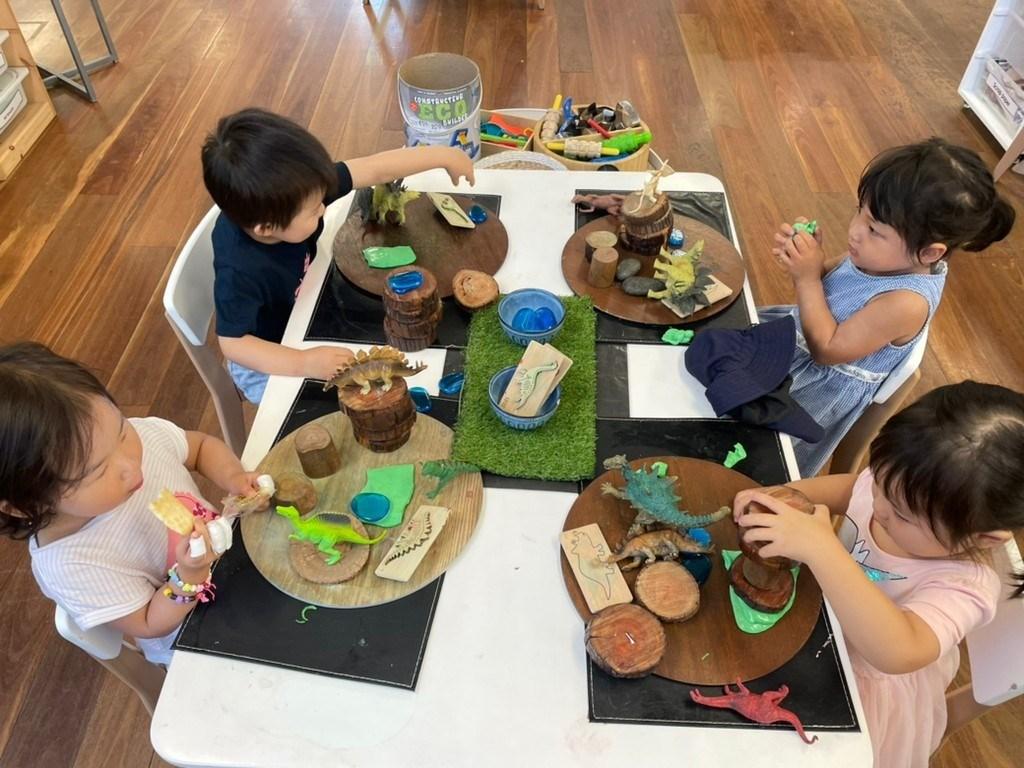


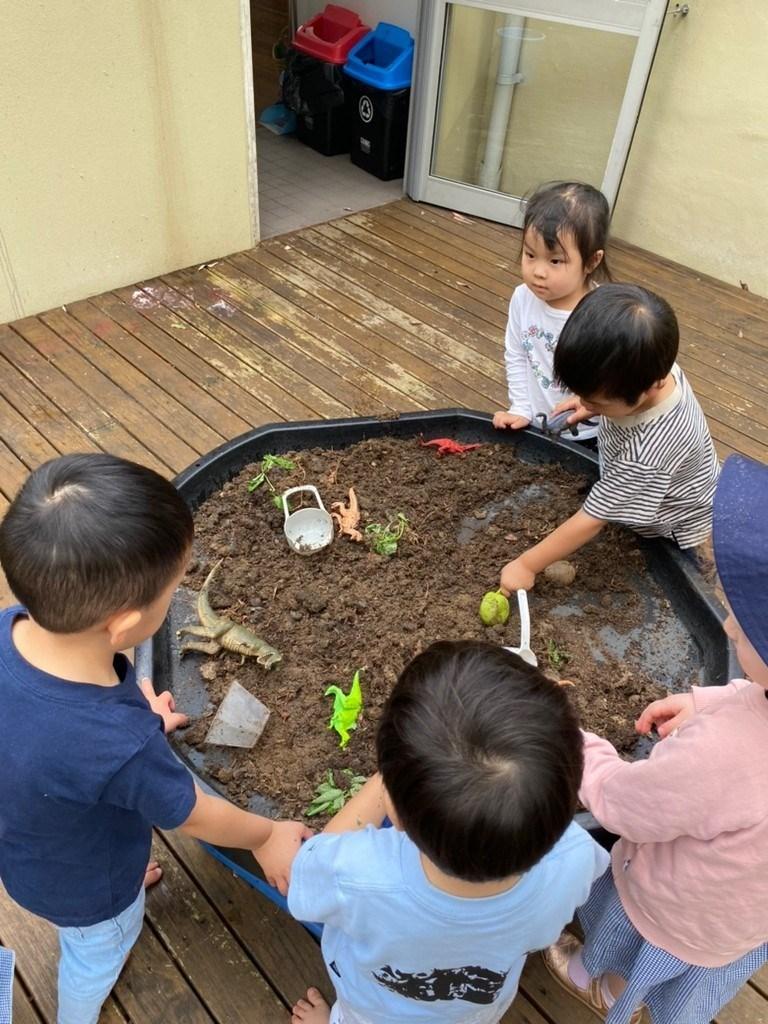
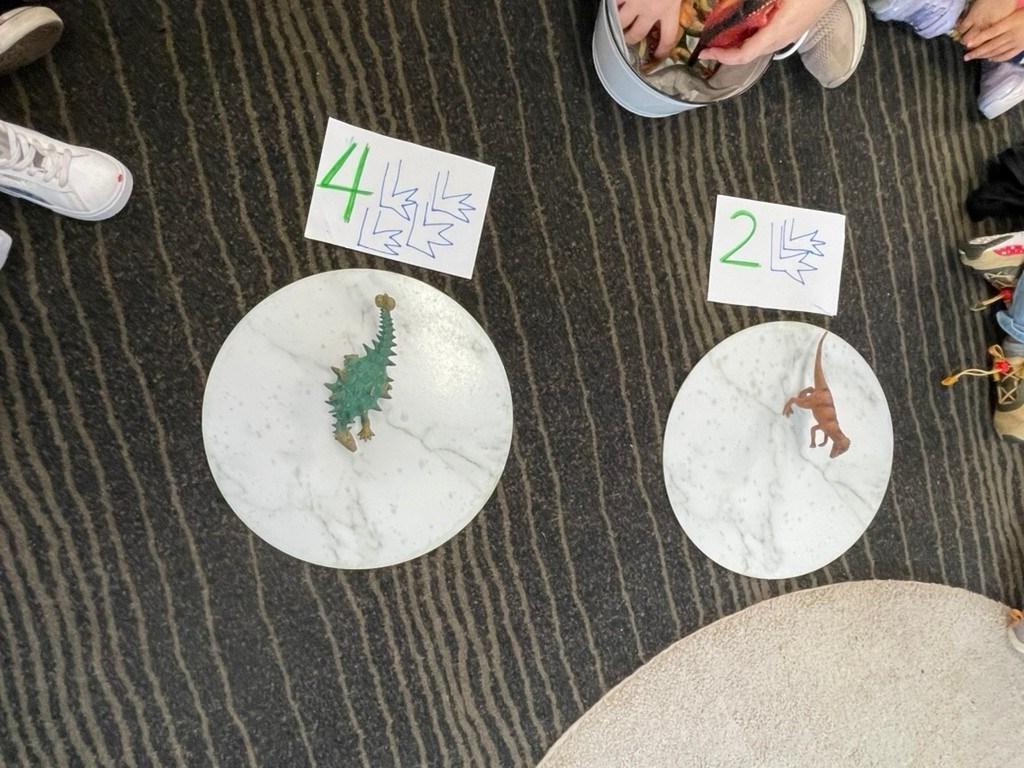
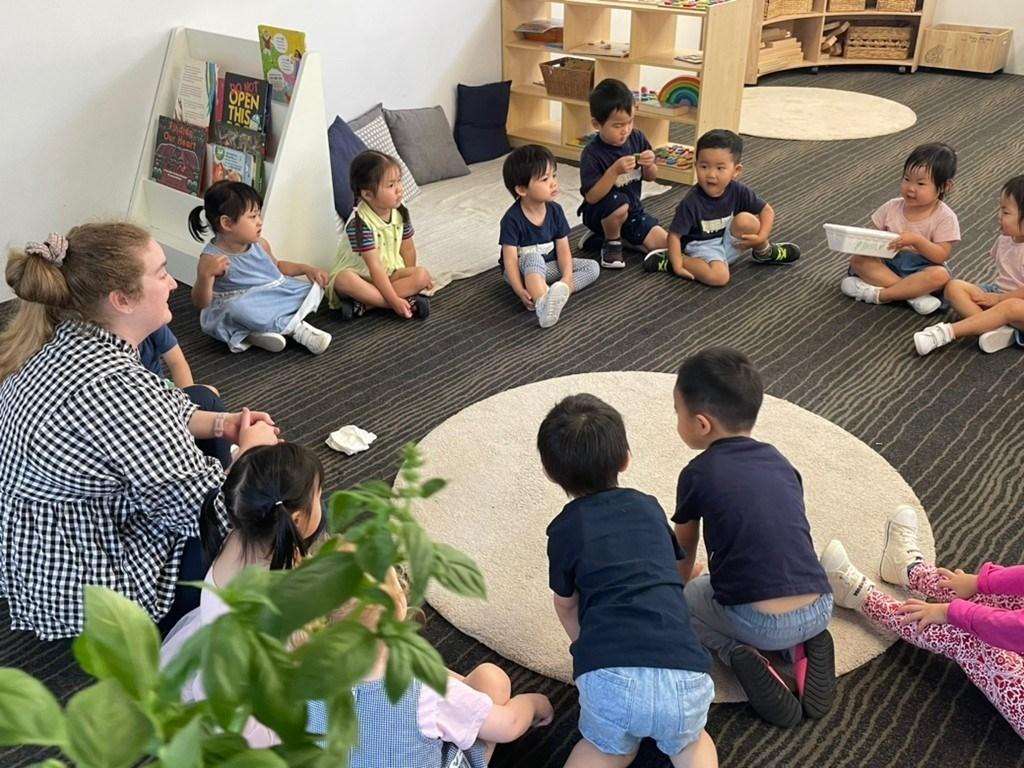
16
Stage 3E
By Laura Ashcroft
“Children leave their mark on life by doing what they can do, not what they cannot… School is important, but life is more important. To be happy is to use your skills productively, no matter what they are” (- Howard Gardner)
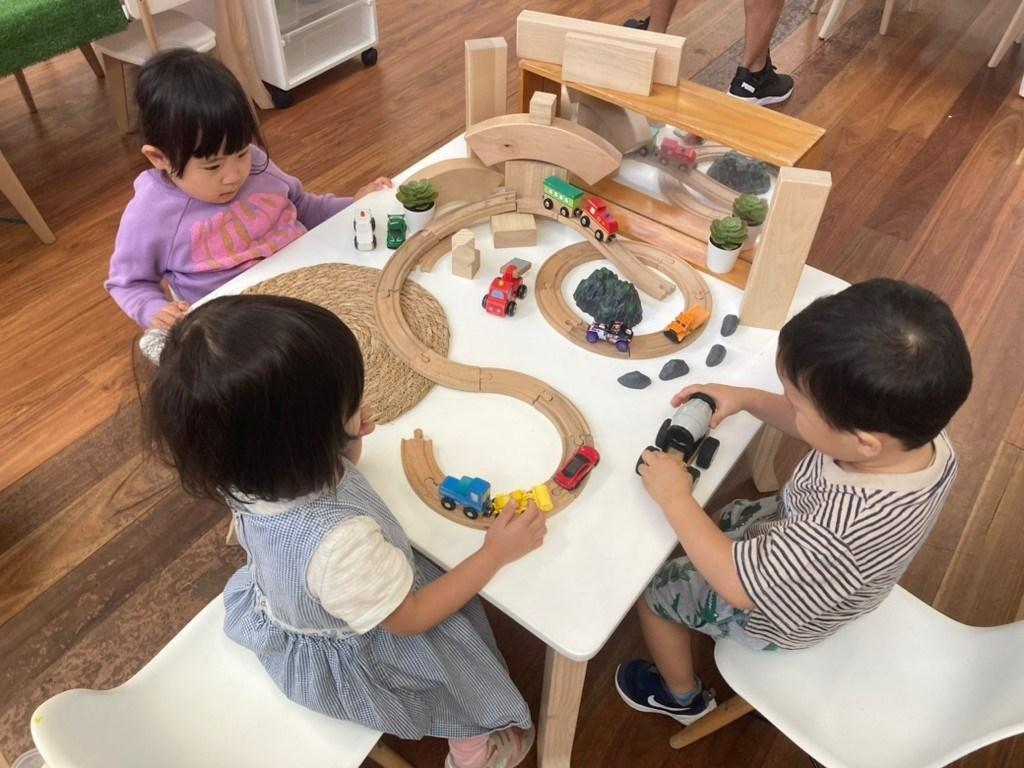
During Week 3, the children have continued to use their emerging sensory capabilities to explore their environments. They have continued to follow and extend upon their learning and interests, by using their sense of smell to smell different herbs, spices, flowers and other things that may give off aroma. The children have enjoyed using their problem -solving and investigation skills to recognise different objects and materials by how they smell. Some of the children were able to formulate their thinking by saying, “This smells like cookies”or “This smells like cake”. These learning experiences have allowed the children to interact with each other positively and continue to initiate their own play and make meaningful connections with other activities and experiences.
The children have also enjoyed engaging in different sensory experiments where they have been able to use their creative skills to manipulate different objects and materials, as well as make meaning. The children have seemed to enjoy experimenting with pouring and mixing to create something new of their own interests, thoughts and ideas. The children were able to use their pre-literacy skills to write their names in sensory trays with different herbs and spices.
The children have continued to explore their feelings and emotions through the visual support of the “Zones of Regulation” which has allowed the children to gain an understanding of being able to identify their own feelings and think about the tools they can use to regulate their emotions and calm their bodies. The children have been able to critically think about which zone they are in and discussing with their peers and teachers about how they are feeling and why.
We hope you all have a lovely weekend, Laura, Natalie & Kai
18
Stage 3E:



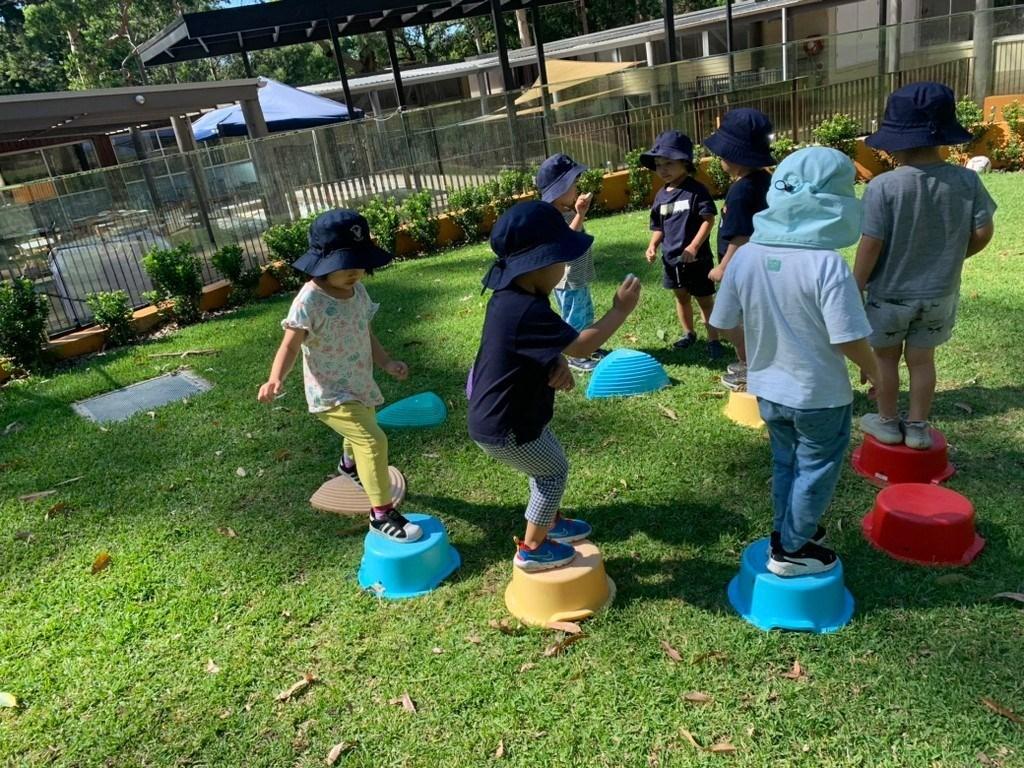
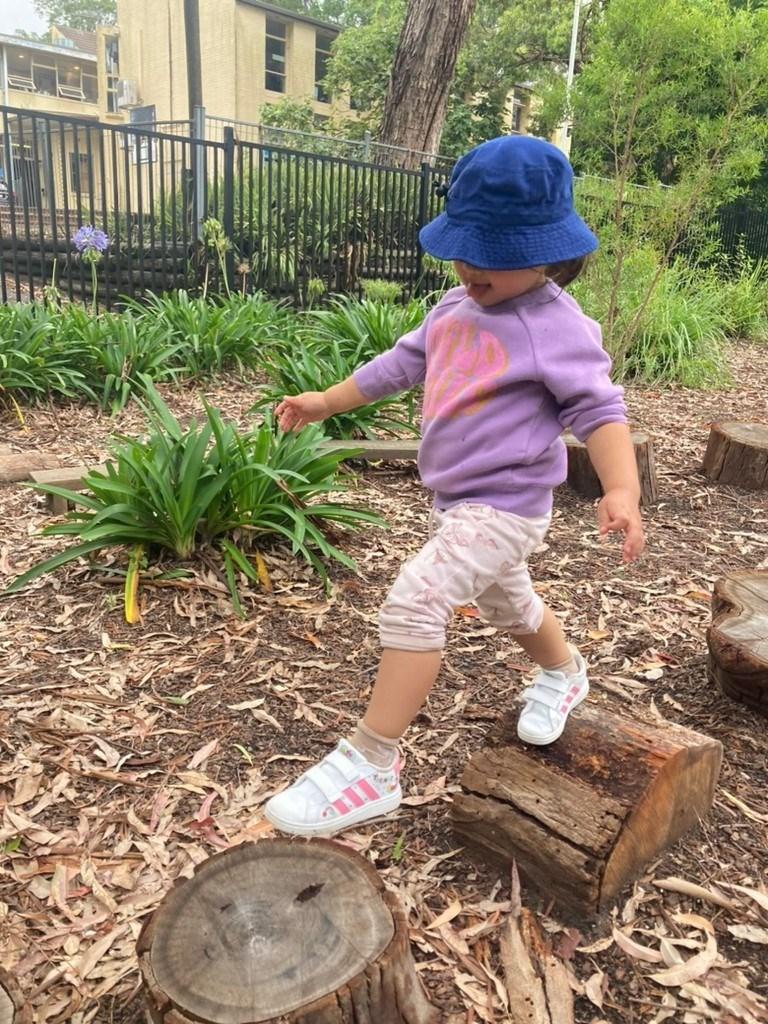
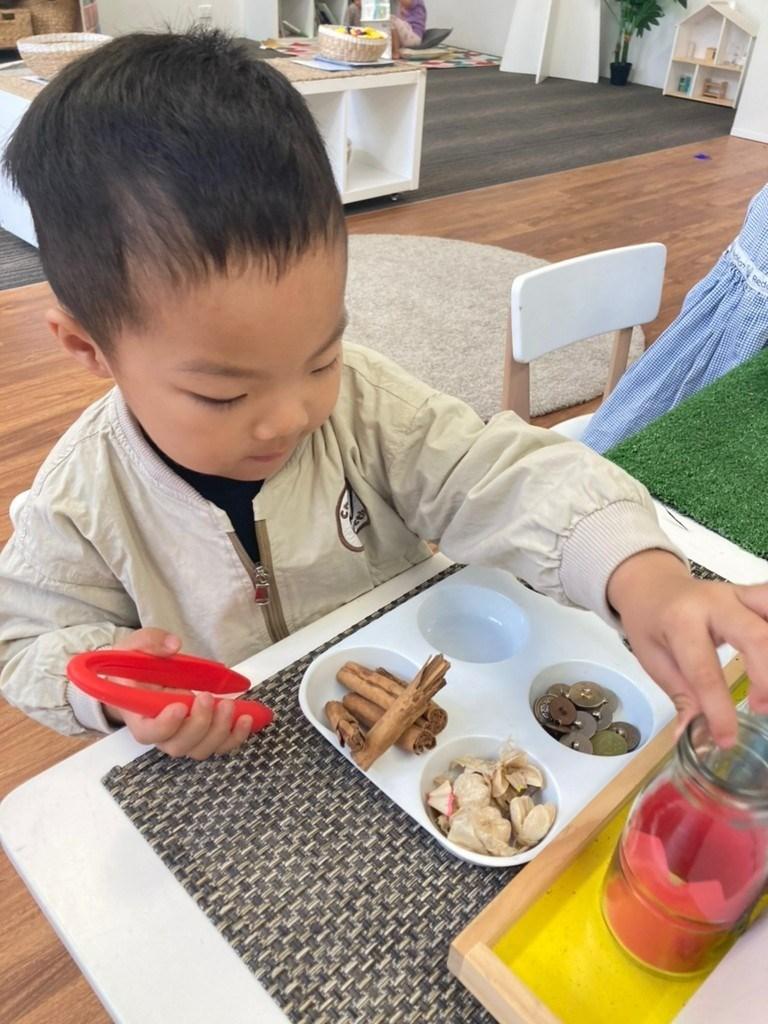


19
Stage 4R
By Amy Cunningham
This week in 4R we continued to explore Australia, its native animals and some of the different traditions and customs of the Torres Strait Islander people. We kicked off the week by researching the very unusual echidna. We enjoyed watching a short National Geographic's video which highlighted some very interesting facts about the creature. Did you know echidnas are actually a type of egg laying mammal (monotremes), that they keep their babies in a pouch for the first seven weeks, or that their spines are actually hard, hollow hair follicles? We also explored a dreamtime story which explained how the echidna got its spines and then we discussed the difference between a dreamtime story and a nonfiction book.

Following the children’s interest in maps, we took a closer look at Australia and travelled to the very tip of far north Queensland to learn about the Torres Strait Islands. The children loved reading a traditional story from the island of Badu, which really sparked their curiosity and allowed room for them to ask many questions about dugongs and the fishing culture around the islands. We continued to study the world map, which led to discussions about different countries around the world. We practised and built on our conversational skills by listening to our friends talk about the various parts of the world their families came from or holidays they have been on. Reading the book “I am Australian Too”, led us to think about how and why people often immigrate from their home countries to come and live in Australia. We reflected on this by looking at our own families and started to create a family photo album. The children loved this experience as they got to share their heritage and talk about the different communities they are a part of.
Throughout the week, the children had opportunities to explore a variety of art resources, creating imaginative and beautiful paintings, collages and drawings. They continued to show a passion for drumming and enjoyed experimenting with rhythm and music by making and playing their own drums. They enjoyed discovering using their senses at the play dough, sand and nature learning stations and extended their numeracy skills by playing with numbers and counting using 1:1 correspondence.
We hope you have a lovely weekend ahead and look forward to seeing you all next week.
Warm wishes,
Amy, Callum and Margaret
21
Stage 4R:

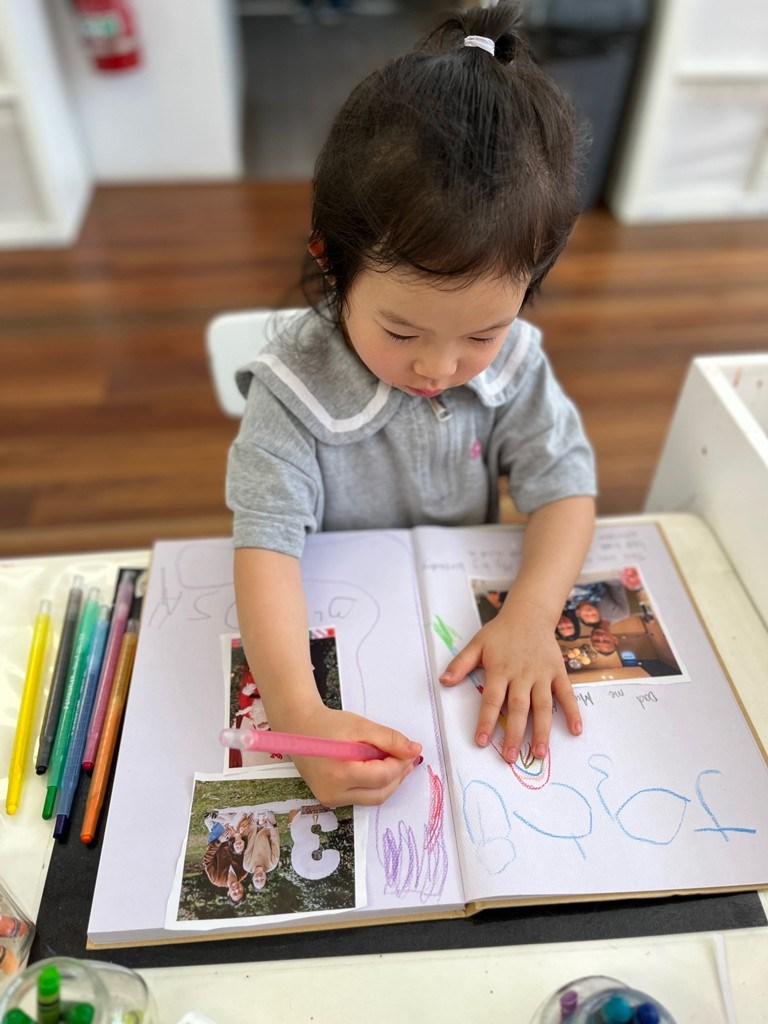
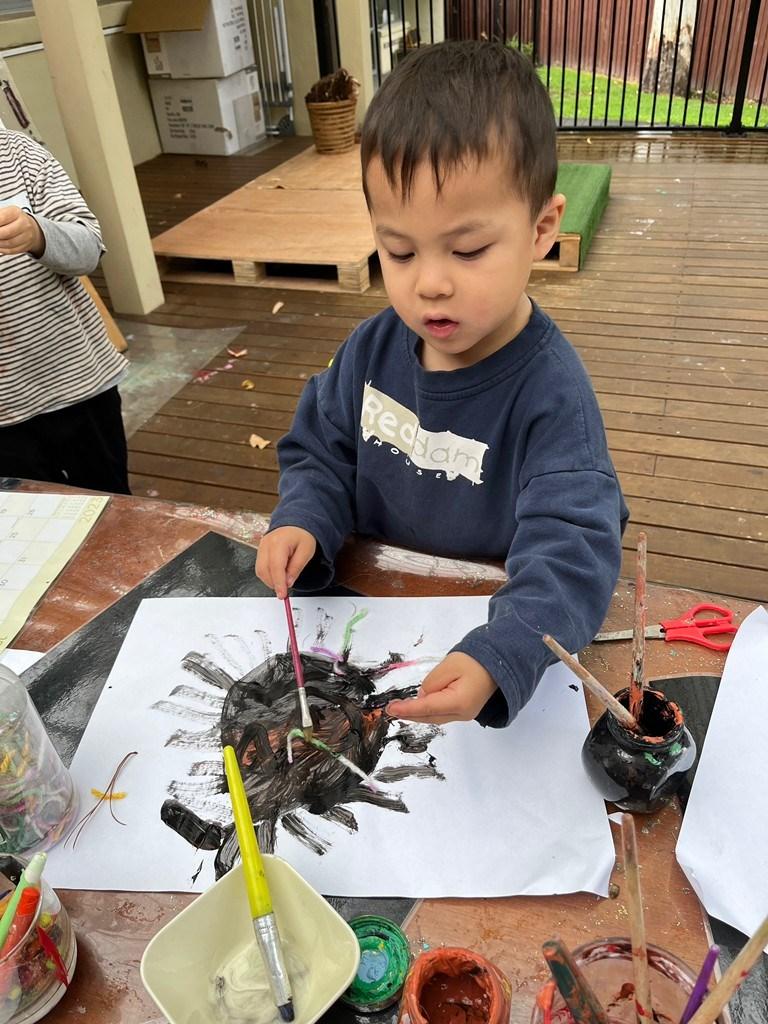
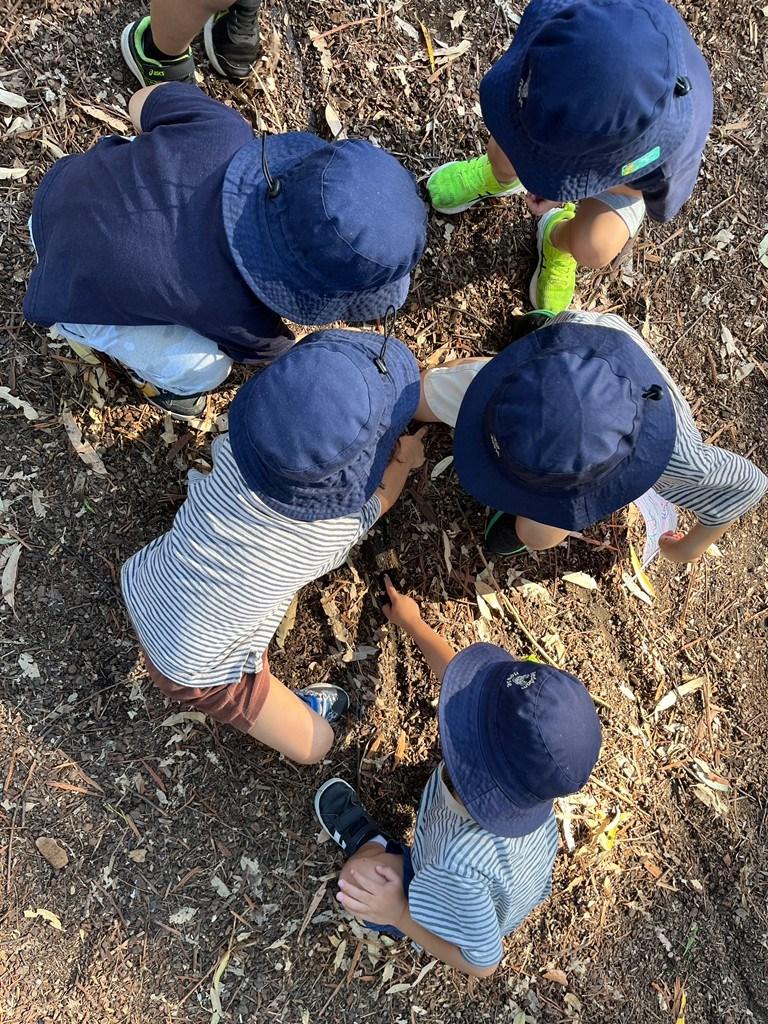
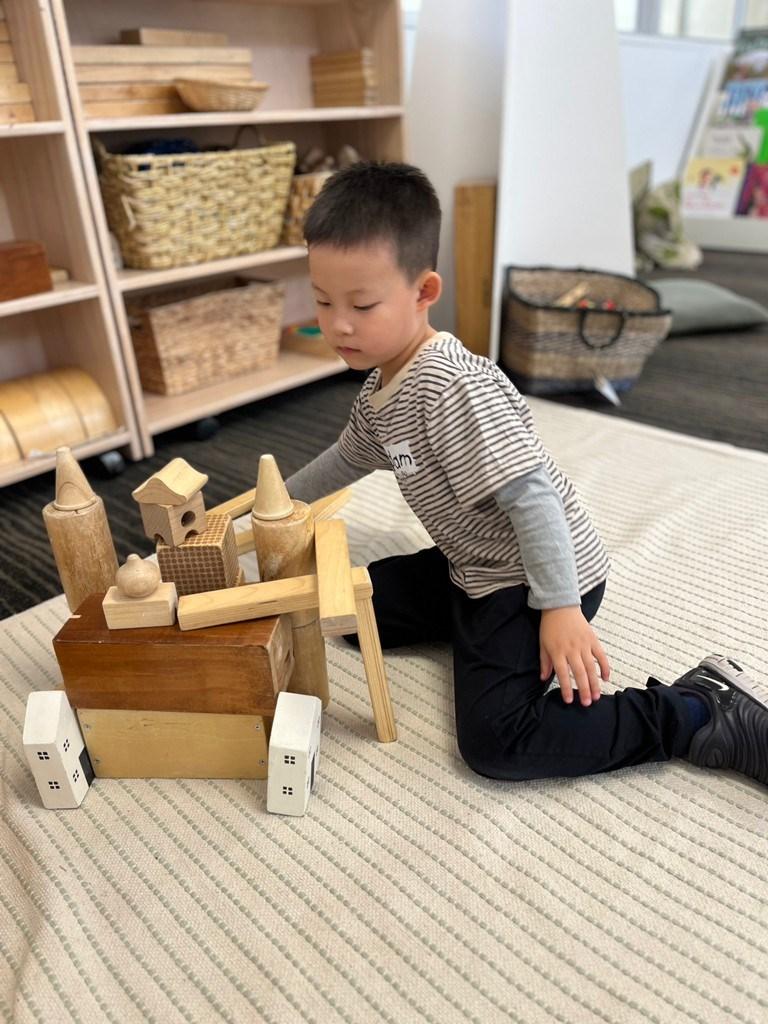



22
Stage 4E
“The natural environment sustains the life of all beings universally.” - Dalai Lama
By Lauren Hall
The children are enjoying taking ownership and responsibility for our edible garden and outdoor environment. During the week, we filled up two more planter boxes with colourful flowers to brighten up our playground, including shades of purple, pink and red to attract more bees and butterflies. Our sunflower seeds are also progressing well, with the children noticing and responding to the changes they see in their plants as they grow taller. The green beans have also germinated and are almost ready to be planted in the vegetable garden where they will continue to thrive.
This week, we also set up our composting bin so we could dispose of our fruit and vegetable scraps more thoughtfully, and incorporate sustainable practices into our daily routine. There is only so much the worms in our worm farm can eat. The children checked on our worm farm to see if they had eaten the last batch of fruit we put in there. Most of the watermelon and pear scraps had disappeared so the children added more pieces of pear leftover from morning tea. We looked closely in the soil and noticed the fatter worms with large nodes on their bodies were adult worms, whereas the smaller, skinner worms were the babies. There were many tiny, yellow worm eggs in the soil too. The more worms, the more rich soil and fast we will have to spread on our garden. We have been placing our orange scraps inside of the compost bin as we learnt last week that oranges and any citrus fruits are bad for worms as the citric acid burns them. Compost is made from layers of fruit and vegetable scraps, grass, leaves, bark and soil. Once the scraps decompose and mix with the other layers, it becomes rich in nutrients and can be used to fertilise our garden spaces.
Our class has become increasingly interested in where our food comes from. We read The ABC Book of Food by Helen Martin and Judith Simpson, where the illustrations explained how our produce in the supermarkets originates on farms. Through our group discussion and role-play with our Woolworth’s Brick Farms, the children have been developing their knowledge and understanding of how fruit and vegetables are grown. They have started to appreciate how hard our farmers work to grow fresh produce for us and realise how much we depend on them. By engaging with our vegetable patches at Reddam, the children are also learning how to create an edible garden as part of their sustainable practices. They understand that food can be grown at home/school and doesn't always need to be purchased from the shops.
One of our highlights of the week was using our herbs from the garden to flavour some freshly baked bread. The children gathered around to learn how bread is made from flour which originates from wheat crops. They also learnt how yeast is a living organism and when activated in warm water and sugar, it allows the bread dough to prove and rise, creating its fluffy texture when baked. The children enjoyed picking their favourite herb, rosemary from our edible garden, along with some fragrant thyme to add to their bread. We all agreed that the bread was very tasty.
“It’s the best bread.” - Ashton “Yummy in my tummy!” - Jahangir “I can taste the rosemary.” - Olivia “It tastes like bread.” - Leon
What a busy week we had together! We look forward to planting more seeds in our edible garden next week and extending our interest in how farms operate.

24
Lauren, Rowel and Rebecca

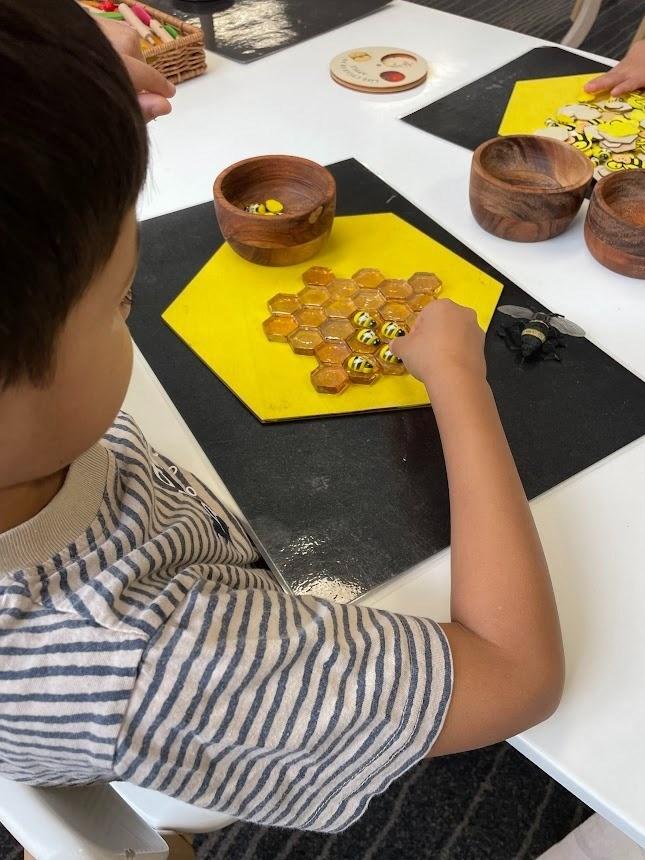

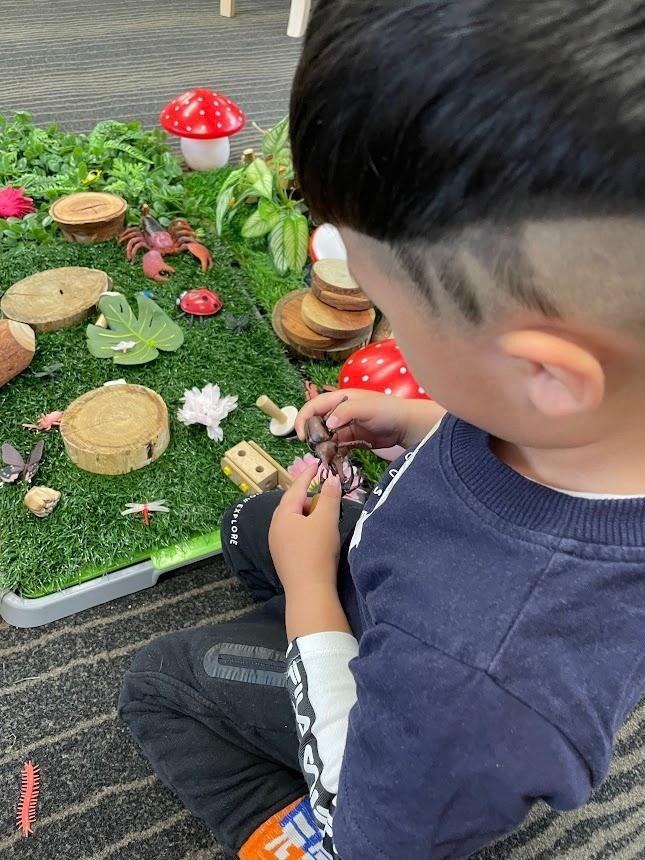

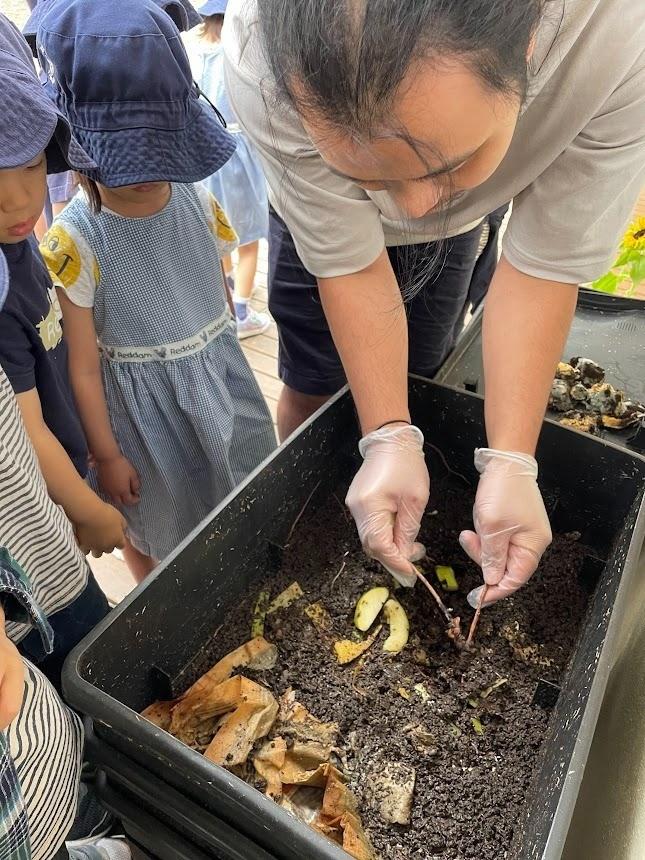



25
Stage 4E:

